 <
<
 >
>
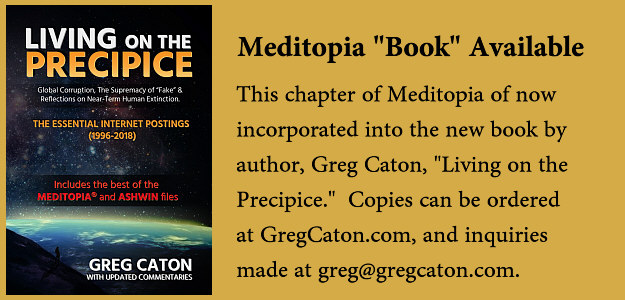
Chapter 1:
A Tear in the Matrix
 "For the medical profession this era may well be
one of the most shameful and ethically questionable
in its history."
"For the medical profession this era may well be
one of the most shameful and ethically questionable
in its history."
Stanley Wohl, M.D.
1
American Physician,
Author, Consumer Advocate
 "Everyone should know that most cancer research is
largely a fraud, and that the major cancer research
organizations are derelict in their duties to the
people who support them."
"Everyone should know that most cancer research is
largely a fraud, and that the major cancer research
organizations are derelict in their duties to the
people who support them."
Linus Pauling
2
Two-time Nobel Laureate
1901-1994
 " . . . there is no disease whose prime cause is
better known. That the prevention of cancer will
come there is no doubt. But how long prevention
will be avoided depends on how long the prophets
of agnosticism will succeed in inhibiting the
application of scientific knowledge in cancer."
" . . . there is no disease whose prime cause is
better known. That the prevention of cancer will
come there is no doubt. But how long prevention
will be avoided depends on how long the prophets
of agnosticism will succeed in inhibiting the
application of scientific knowledge in cancer."
Otto Warburg
3
Also a Two-time Nobel Laureate
1883-1970
 "The American public has no idea how politics secretly
control the practice of medicine. If a doctor
dares to introduce a natural, less costly method,
no matter how safe or effective, Organized American
Medicine can target this doctor for license revocation
using fear tactics and legal maneuverings. Why do
holistic therapies threaten medicine? (Firstly) They involve
a major change in scientific thought. (Secondly) They imply
that current methods are inadequate, and, (Thirdly) they
threaten huge profits ... "
"The American public has no idea how politics secretly
control the practice of medicine. If a doctor
dares to introduce a natural, less costly method,
no matter how safe or effective, Organized American
Medicine can target this doctor for license revocation
using fear tactics and legal maneuverings. Why do
holistic therapies threaten medicine? (Firstly) They involve
a major change in scientific thought. (Secondly) They imply
that current methods are inadequate, and, (Thirdly) they
threaten huge profits ... "
James P. Carter, M.D., Ph.D.
4
American Physician
Baton Rouge, Louisiana
Author: "Racketeering in Medicine"
 "It is very difficult to believe that the very centers
entrusted with research in cancer at such enormous
expense are 'inhibiting the application of scientific
knowledge in cancer' but it is not so difficult to
understand once the economics of cancer is grasped.
"It is very difficult to believe that the very centers
entrusted with research in cancer at such enormous
expense are 'inhibiting the application of scientific
knowledge in cancer' but it is not so difficult to
understand once the economics of cancer is grasped.
 "The treatment of cancer is, after all, a business which
is very lucrative and very expensive for the customer.
The goal of most exclusively profit-minded business men
is to sell their commodity at the highest price possible
in a market where they can eliminate all competition
and customers have no choice but their commodity.
Such entrepreneurs secure a monopoly by convincing
their customers that theirs is the only valid product
available and that competitors are frauds whose product
is worthless.
"The treatment of cancer is, after all, a business which
is very lucrative and very expensive for the customer.
The goal of most exclusively profit-minded business men
is to sell their commodity at the highest price possible
in a market where they can eliminate all competition
and customers have no choice but their commodity.
Such entrepreneurs secure a monopoly by convincing
their customers that theirs is the only valid product
available and that competitors are frauds whose product
is worthless.
 "A monopoly of any market is a sure source of profit;
a captive clientele has no other choice. The sellers
can charge any price the market will bear and can
evade any responsibility for bad results because
they do not and cannot give any guarantees. They
eliminate all critics of their products and challenges
to their authority. Their business prospers; thousands
of new customers constantly replace those that disappear.
"A monopoly of any market is a sure source of profit;
a captive clientele has no other choice. The sellers
can charge any price the market will bear and can
evade any responsibility for bad results because
they do not and cannot give any guarantees. They
eliminate all critics of their products and challenges
to their authority. Their business prospers; thousands
of new customers constantly replace those that disappear.
 "The original John D. Rockefeller was no mean hand at spotting
the commercial possibilities in any enterprise. As his
millions came in, he kept reinvesting in the most
profitable businesses. One day when appendectomies
were the rage in the medical profession, a surgeon
told John D. that everyone should have an appendectomy
before the age of sixteen as a preventative. The oil
wizard saw the point at once... 'Why, you've got a better
thing than Standard Oil' ... "
"The original John D. Rockefeller was no mean hand at spotting
the commercial possibilities in any enterprise. As his
millions came in, he kept reinvesting in the most
profitable businesses. One day when appendectomies
were the rage in the medical profession, a surgeon
told John D. that everyone should have an appendectomy
before the age of sixteen as a preventative. The oil
wizard saw the point at once... 'Why, you've got a better
thing than Standard Oil' ... "
Nat Morris
5
"The Cancer Blackout" (1959)
 reat
ideas and earth-shifting revelations quite often find their
messengers in some state of personal tragedy at their point of discovery.
Why that is, I don't know. But I can attest to its frequency in my own
life; and, in fact, pathos has accompanied my life at almost every turn
of substance. The greater the pain, the more sublime and consequential
the noetic and spiritual epiphany that followed.
 And so it was at the close 1989,
the end of a tumultuous decade, during which I'd uprooted from
my home in Los Angeles to move to the provincial southern town of
Lake Charles, Louisiana. That year I found myself filing for
corporate bankruptcy, followed by my first run-in with U.S. federal
authorities, and concluding with the end of my first marriage.
At the age of 33, I began the '90s by packing a few personal items
into a small car and moving into a crowded, two-bedroom apartment with
a friend and her three small children. It was a
winter of discontent, and it would not be my last.
 Concurrent with this development and in keeping with my never-ending
attraction to unusual, out-of-the-box entrepreneurial possibilities, I
had just recently been put in contact with a two-man business in Texas
called Medical Sciences, Inc. Armed with an herbal black goo and
an encapsulated herbal formula for internal use, our merry twosome
could be found scampering around the South Texas hill country in
lab coats and carrying stethoscopes. No satirist could possibly
paint a picture of two country bumpkins who better fit the archetype
of snake oil doctors selling a quack cancer cure than this duo. Despite
my natural openness to investigate all things unconventional
if a thread of truth could be found, I had real reservations about
this one. There was just one small thing that kept me from walking
away without hesitation.
 Their products actually worked.
 They even worked on advanced Stage IV cancers with extensive
metastasis for which primary care physicians had completely given up
hope. (A patient knows when his oncologist has reached that point
when the subject of discussion centers on the status of his will
and the settling of any unattended legal affairs.)
 I watched a clumsily composed VCR tape showing case after case
of grateful customers providing their own personal testimony. I could
tell that, on the whole, their stories were genuine.
[ See the video - ( 6 )].
I also spoke
directly to a number of end users who related stories that were nothing
short of miraculous. In most of these cases, orthodox medicine had
failed miserably, and many had no problem sharing their disdain for
conventional cancer treatment -- not because they were predisposed to
any particular philosophical position, but because they were
eyewitnesses to their own victimhood. And so, when able to obtain some of
the topical salve myself, I applied the product on a rapidly enlarging mole that
that had been growing on my face. Apparently, the vanity that had encouraged
my first wife and I to purchase a sun tanning bed for one of our
bedrooms had come back to haunt me. About two centimeters below my
left eye, the mole wasn't just getting larger, it was getting much darker.
As a student of herbology for many years, I knew the symptoms well,
and yet I had delayed in seeking out the (second) opinion of a
dermatologist.
 The salve created a slight sting for about two days and within
two weeks the resulting scab came out. Six months later, by mid-1990,
I couldn't even tell I had ever had that mole. It is now 15 years
later, and the growth has never returned. Now whether or not the
growth was a basal or squamous cell carcinoma, I'll never know. It
didn't matter to me. What mattered was that I had accidentally stumbled
upon one of the cracks in modern medicine's well-crafted mythology
concerning the source of "cures." I was getting sucked into a vortex
of discovery that would, in time, lead me to fully view the unseen
underbelly of what some call the "Medical Industrial Complex"
[ 7],
a system in which a combination of pride, profits, and prejudice
had created a fabric of corruption so vast, so evil, and so
breathtaking in its breadth, longevity, and audacity,
that it would reshape my entire worldview... but not before entering a
world of intrigue that, viewed from the perspective of most "normal"
people, borders on the surreal.
 Impressed with what I had observed so far, I attempted to
enter into a business relationship with Medical Sciences, Inc. about
this same time. Zane Blanton and Calvin Taylor proved to be very
difficult people to negotiate with. Basic contractual points were
altered after oral understandings were reached. Then changed again.
As a friend of mine who works as an investment broker, Steve Roberts, M.D.,
tells me, this is the classic "mad scientist negotiation game."
He says, "They are so worried that the entire world is out to screw
them that you basically end up wasting weeks of time on a deal that
never had a chance of reaching fruition in the first place."
(Years later I would relate the entire incident to Steve, and
thereafter it became an ongoing joke. I couldn't conclude a
phone conversation with him without hearing a reversion to his
very best imitation of a frantic, 95 year old mad scientist ...
"You're trying to screeeeeeewww me!")
 But mad scientists Blanton and Taylor were not -- mad or
otherwise. Intellectuals they were not. Knowledgeable they were not.
Delusional they were. I didn't learn this until I was contacted
by the man who was actually making their product.
 Enter Hal Matheny.
 Hal came to my office in Lake Charles --
(my primary work space from 1986 to 2007). He revealed that
his formulations were variants of the work of a
Howard McCreary,
a self-styled cowboy herbalist, who went around the country
passing out a black herbal paste that many thousands of people
had used to remove both skin cancers and a wide variety of
internal cancer tumors. He told me that the formulas
were so old that it would be difficult for anyone to claim
authorship. However, that would not stop them from trying.
 Not long after I met with Hal, he died in a mysterious --
some would say highly suspicious -- plane crash. An experienced
pilot with over 5,000 hours of flight time, Hal was flying
a "tail dragger" near his home in Bastrop, Texas, when
suddenly this "very forgiving aircraft" made a nosedive and
headed straight into the ground. A couple of months later,
in the spring of 1990, I was indicted, along with three other
individuals, by a grand jury in Giddings, Texas for "Theft of
Trade Secrets," an action obviously engineered by Blanton and
Taylor with help from friends in the local city attorney's
office.
 Broke and "on my last nickel," I worked with my court
appointed attorney to try to make the best of being arrested
for, as Taylor would put it, "stealing my cancer cure."
 In the course of the ensuing investigation, another
defendant and I showed the prosecution a document that would
end any notion that their case had merit: U.S. Patent No.
209,331, filed in 1878 (hereafter, the "Daniel patent").
Apparently, no one connected with Taylor or Blanton had thought
to see if the formulary work they were so gleefully having made
was proprietary. The fact is (or was), it is, indeed, very old
and very much in the public domain. Made from just three
ingredients: zinc chloride, bloodroot (Papaveraceae
sanguinaria canadensis)
[ 8], and
kerosene oil [ 9], it appears
that with the substitution of water for the kerosene oil,
plus the addition of galanga (Alpina officinalis, a cousin
of ginger, and extraneous to the
effectiveness of the formula), the "trade secret" turned
out to be rarely in trade, but not very secret. Although
the case, for all intents and purposes, was closed, my
curiosity as to how such a miraculous "technology" (if
such formulary simplicity merits the use of the term)
could be in such disuse, was hardly satisfied.
 How was it possible for something this simple,
this inexpensive, this non-toxic (when properly used),
and this highly effective, to "fall through the cracks"?
Further investigations only served to call more issues
into question. Apparently "Medical Sciences," with the help
of Howard McCreary, had fallen upon a simple tradition of
curing cancer -- so old and effective, and so empowering
to ordinary people without any intervention on the part
of the medical community, that its very benefits had
condemned it to be professionally reviled -- thus causing
it to be a permanent regulatory target.
 It had a name:
escharotic, a pejorative term
given to it by early medical practitioners who saw their
practices suffer whenever their patients were able to obtain
the product. Since "eschar" comes from the Greek word for
"burn," they were able to sum up their campaign to destroy the
everyday use of these products in their very word to
describe it. [ 9b]
The name became so prevalent that even
proponents of escharotic preparations used the term.
The fictitious claim that "escharotics" do nothing more
than "burn the skin" is still used to this day, with every
bit the sense of gravity and feigned genuineness as it
was in the 1880s. (Small problem: it isn't true.
We cover that later in Chapter 2.)
 And yet, escharotics turned out to be an
unkillable foe, like a stubborn crabgrass that refuses
to forever depart from the dichondra lover's lawn.
The patent office tells the story: beginning
with U.S. Patent No. 92209,
filed in 1869, escharotics
proceed through the Daniels patent to Patent No. 1411577
("Mullins," filed in 1922), which is so close to Daniels'
patent, I'm surprised it was issued. And then you have
U.S. Patent No. 4,229,437
and 4,315,916, which supposedly use
bittersweet (Celastraceae celastrus scandens), instead
of bloodroot, with zinc chloride -- (although, frankly,
I was confused as an herbalist, because "Solanum
dulcamara" was the botanical name given for this new
botanical variation, and everybody knows that's
"climbing nightshade"). The claims on the wide range
of skin growths this simple formula will remove is
accurate, by the way.
 Less creative still is U.S. Patent No.
4,515,779,
filed in 1981 by John Q. Elliott -- this variant based on
zinc chloride, bloodroot, and ginger root in equal
amounts -- again, another very close version.
 And then you have "complicated versions"
(which, as you'll learn from reading this book, is the
essence of medical advancement: complicated is good,
more likely to earn a profit; simple is bad; people
figuring things out for themselves, bad. BAD!)
Two such monstrosities include U.S. Patent
No. 2,344,830 (1944)
and 6,558,694 (2000). Their filings may be separated
by a half century; their objective and the transparency
of their raison d'être are not. These forays into
legalistic one-upmanship weave the formulary essence into
a surgical process -- which, if you understand
escharotic preparations, is completely unnecessary.
Sure, it makes a lot more money for the medical
community -- but it is, nonetheless, unnecessary.
(This monstrous attempt to make surgery essential
to a process for which the knife is totally
unnecessary forms the basis for Mohs surgery,
a dermatological procedure that is standard and
approved in most Western countries. But I'll
get to that later also.) [ 9c]
 Some patents use obfuscating language to try and
hide what really amounts to a re-filing of something quite
old. Patents 4,053,630
and 4,224,339 use the same escharotic
knowledge, expand the base of metal salts claimed
to be effective, add commonly used organic acids
(or their metal chelates) and get through on the basis that
they are a treatment for disturbed keratinization.
 U.S. Patent No.
4,847,083 is a variant for
decubitus ulcers -- though a complex one.
 None of this covers the variations yet to
be used as an oral preparation. But don't worry --
the story of Vipont Pharmaceutical is upcoming.
My point in even touching upon all this patent work
is simply to make clear just how widespread the
discoveries involving escharotics have been.
This does nothing but make the effort to suppress
them all that more horrific and shameful.
 usiness
people are often accused by those of
a more singular technical or scientific frame of mind
of being cerebrally challenged bean counters. They see
the business, the money to be made, sure --- but
they are, more times than not, incapable of grasping
the "whole picture." By focusing only on the immediacy
of creating profit-producing commerce, they don't allow the
full blossoming of whatever science might bring.
It is a recurrent theme among the technocrats of the world,
and among some specialists -- ecological sociologists
comes to mind; it is a vital tenet of their work.
 One thing that better business people do,
however -- and I aspired to embody this trait,
is identify trends. You don't have to be able to
fully navigate the subtleties of linear regression,
but you need to be able to spot synchronicities
and ask yourself, "Why?" Is the phenomena I'm observing
an isolated incident? Or does it have parallels elsewhere
that I can learn from? Are there tendencies I can identify?
Are others aware of these trends -- and if not, can
I turn them into opportunity?
 It was obvious to me that escharotic preparations
were, quite clearly, having taken a year of my life to
study their history, use, and effects, a cure for cancer -
when properly manufactured and properly applied.
Not a preventive. Not a palliative. A cure. Let's
spell it together: C-U-R-E.
 The next
question, therefore, was obvious.
 Just how many other similar phenomena were out
there to be "re-discovered"? Were there also highly
effective cures for strokes, heart disease, arthritis,
diabetes, multiple sclerosis, Alzheimer's and God only
knew how many other lesser ailments that were being suppressed because of their
simplicity and threat to the established order?
 I didn't have to look far to see evidence
of this "suppression pattern." The number of exposés
on the criminality of the medical establishment in
this area turned out to be quite overwhelming.
It wasn't that a body of work documenting this kind
of malfeasance wasn't out there. It just wasn't being
read. Fine.
 What I wanted, however, were specifics. It wasn't
good enough for me to see, with crystal clarity, that
the medical industrial establishment, including the
pharmaceutical companies, the HMO's, hospitals, medical
specialists, all their respective lobbyists, and their
enforcement hacks at the Food & Drug Administration,
had a vested interest in squelching competition.
I went well beyond seeing that science and its
applications in the world of commerce were largely
guided along lines of profit, exclusivity, monopoly,
and destroying competition. I understood that.
I'm a businessman. What others might call a
conspiracy, I can identify as "business as usual."
 My inquiry had to go farther.
 I wanted to know WHAT was being suppressed.
Moreover, I wanted to know precisely what the inventors knew,
the first victims in the chain of suppression. I wanted to find
ways of marketing what they could not. As a technically-oriented
business person - as well as a scientist and inventor
in my own right, I wanted to learn both the technologies,
and the methods to negotiate the legal and political landmines that
prevented these superior methods of treatment from getting
into the marketplace.
 Early in the fall of 1990, I contacted a man who had
achieved considerable success in the pharmaceutical industry. Dr.
Russell T. Jordan was a man with a most interesting history.
A fighter pilot in World War II, Jordan initially took the
academic path before becoming a co-founder of
Vipont Pharmaceutical.
Jordan was already semi-retired by the time I made his acquaintance.
Consulting as " MedConEx,"
Jordan helped me fill in some of the
pieces regarding the history of escharotics.
 Jordan was well familiar with escharotics when I met him.
He had managed to turn his own acquaintenance with
Howard McCreary
into a business opportunity of his own: the creation of
Vipont Pharmaceutical in Fort Collins, Colorado. Vipont's
core business ended up being a dentifrice and mouthwash, although
15 out of their 23 U.S. patents revolved around bloodroot
[ 10-24],
with most of the remaining work having at least some tangential
relationship
[ 25-32]. (A variety of autobiographical histories
on Vipont surfaced -- I even
posted one
[ 33]
-- but Jordan appeared to stay above the fray on 'credit-taking.')
[ 34]
 At the time that I met him,
Jordan was heavily involved in researching
the properties of another medicinal chemical, nordihydroguararetic
acid. "NDGA," as it is commonly called, is a catecholic butane,
and the primary, active compound of another beloved
specimen of Native American ethnobotany, chapparal (of which I
worked with three out of the six species on the North American
continent: Zygophyllaceae larrea divaricata, L. mexicata, and L. tridentata).
Jordan began researching other medicinal herbs which could be combined
with zinc chloride to get the same cancer curing effect, and
sometime during the early to mid 1980s, he came upon
chapparal leaves as an even better additive to the traditional
zinc chloride escharotic than the bloodroot rhizome of old.
Jordan's work lead to both a patent
[ 35] and a working relationship
with a struggling pharmaceutical company, Chemex Pharmaceutical,
that had been trying to find its place among
respectable American drug companies since its founding in 1975.
Refinement of this latest embodiment of the escharotic concept
lead Jordan to expand claimed proprietorship over all other
catecholic butanes, besides the NDGA in chapparal
[ 36].
 It also lead to a flurry of related patent filings which did
little to truly enhance the effectiveness of the original
embodiment.
[ 37-42].
The search after Jordan's contribution,
as is the case with all modern drug companies, was the search
for respectability, proprietorship, and government approval.
 What resulted from this was the creation of Actinex
(Masoprocol) as a registered tradename for NDGA; subsequent
FDA approval
[ 43] and
now common usage for keratosis
[ 44].
Chemex itself eventually merged with Access Pharmaceutical
in Dallas, Texas.
[ 45].
At least one attempt was made commercially
and quite publically to make use of the zinc chloride / NDGA
combination, but it was quickly taken off the market.
[ 46].
 Most of these
events happened while Jordan was still
alive, but well after the period from 1990 to 1991 that I worked
with him.
[ 47].
The important point to note here is that
Jordan considered the reality of his discovery to be
largely a case of misuse. He knew what anyone who has
ever worked with the various zinc chloride embodiments
in escharotics knew: they cure cancer. Relegating his
findings to a treatment for keratosis marginalized the
potential of the product.
 Before working
in the pharmaceutical industry, Jordan had been a professor
of medicine at the University of Michigan. A good teacher he
was, and it was he that exposed me to the political realities
of modern medicine. "Health care is a misnomer," he would say,
"What we have today is 'disease care.' And if a product doesn't
make people in high places a lot of money, it won't have a chance
of surviving in the marketplace. They'll just kill it -- and
sometimes the person who introduces it."
 Escharotics
are especially offensive to the medical community
for ten very obvious and powerful reasons. Because these
reasons recur with such frequency and poignancy
as we continue our study, that we will end the
first chapter by enumerating them now:
- The Products (Escharotics) Cure Cancer.
(And as we'll see
in further chapters, so do quite a number of other
suppressed treatment approaches).
The escharotic versions I went on to
create worked better than 99% of the time topically, and
better than 50% of the time on a wide range of internal
cancers, excluding blood cancers (i.e. leukemia, lymphomas,
and Hodgkin's). From 1995 to 2003, I ran and operated
Alpha Omega Labs (altcancer.com), after already having
five years experience in working with escharotics.
I created a line of escharotic products that I named "Cansema® "
(merging "cancer" with the popular trademark, Noxzema® and
pronounced can-see'-muh.).
[47b].
In only two cases did customers "claim"
that the topical product did not work, and in only one case did a
customer sue (Sue Gilliatt vs. Gregory James Caton, et. al.),
and in even THAT case, the plaintiff admitted in sworn
deposition that her cancer had been cured.
[48].
As to
the internal versions of Cansema® that were escharotic
(Capsules and Tonic I), few customers failed to report
some progress -- if not dramatic results.
We were able to produce testimonial pages
displaying an array of astonishing success stories.
- They're cheap.
They are easy and inexpensive to make, not to
mention inexpensive
to sell (relative to orthodox treatment). Cansema® Salve,
the primary salve I created and sold for $49.95 USD, could be
used to cure a dozen or more average sized skin carcinomas.
No monopoly, big profits, or advantages of extortionary
regulation to be had here. Not good for the home team.
- No Doctor Is Required.
They do not require the intervention of a doctor.
They place most cancer treatments on the same level as going to
the local drugstore to get a topical ointment to eliminate
Athlete's Foot.
- They're Non-Toxic.
They are not at all toxic topically. The
internal variations are potentially toxic (especially
with the use of bloodroot, which contain potent alkaloids,
notably sanguarene), but not if properly formulated -- with
adherence to a clearly stated, properly tested protocol.
- They Expose Long-Standing Industry and
Government-Based Fraud of Unimaginable Proportion.
Their very existence makes clear what an
enormous fraud that orthodox chemotherapy, radiation,
and most surgery are. Moreover, their efficacy exposes
what a joke the multibillion dollar "cancer research"
industry is and has been for the better part of a
century.
- They're Non-Patentable.
They cannot be meaningfully patented. Those
escharotics that have been patented could not be reasonably
defended. Without a basis to secure a monopoly, no faction with
the drug industry could possibly condone the public becoming
knowledgeable in the use of escharotics.
- They Do Not Lend Themselves to Proprietary Ownership
and the Monopolistic Privileges It Brings.
They've been around for so long that no one
can claim credit or ownership to the essential principles behind
them -- the principles supporting their efficacy.
- Indigenous Ethnobotanical Origins Are Shown to
Be Superior.
Escharotics' origins
-- that is, if anyone at all is to
get credit for their discovery -- go back to indigenous and
aboriginal sources. Nothing is more embarrassing to
modern science than the admission that we have spent
many hundreds of billions of dollars on a project, and
still we cannot improve upon the advice of medicine
men ("those brute savages!") who fail to bow to the gods
of our superior, industrial, mechanistic universe. This is
cognitive dissonance we shall not put up ed! It is a
"tear in the matrix" that threatens to create a cascade
among the weary electorate who just might decide to become
"unplugged."
- True Democracy Is Exposed as a Sham
Escharotics' existence undermines the legitimacy
of representative democracy. It allows even the more
obtuse among the civically ignorant citizenry to view
the mythology of "government by the people" in all its
disinformation. If escharotics are not
proof that most Western democracies are, in actuality,
plutocracies that put the interest of the rich and
influential over those of the common man, nothing is.
If the average citizen in the U.S., U.K., Australia,
New Zealand, etc. knew what I knew, they would know that
they possess absolute proof, in their hands, that
modern medicine is the story of creative financial
servitude. They would know that their so-called "elected
representatives" are not only complicit, but are owned
-- lock, stock, and barrel -- by the power elite.
They would internalize, with unmistakeable clarity,
the evidence that their houses of political
representation were, in fact, little more than
multinational corporate brothels.
Not that many are not already aware
of the fact; but it would most decidedly raise, as
Alan Watts used to say, the "intensity of the concept"
to a higher level of outrage. Most people, to this
point, have not had the capacity to understand the cruel
machinations that sit behind this kind of brutality.
- Knowledge of their Existence and Proper Use Would
Lead to the Wholesale Bankruptcy of the
Medical Industry in the West
If the preparation
and use of escharotics were widely known to
ordinary citizens, this knowledge among the "People"
would only lead to the embracing of other, equally
effective natural remedies that are far superior
to anything that modern medicine, generally -- and
more specifically, modern pharmacology -- has to
offer. Any significant movement in this direction would
have an accelerating character and would -- as I will expand upon
in upcoming chapters -- bring about the
financial decimation of the pharmaceutical
industry in the West and much of the
medical industry that is allied to it.
 Remember these conditions --
integral to what I call the "Suppression Pattern" -- as they
form a recurrent
theme in this book. The concept is further refined as
as the book progresses -- and, in fact, I will refer back to these
points as the "Ten Conditions" in subsequent chapters.
 For now, before I can complete the chronology
of events that leads to the present, it is important
to examine a brief history of escharotics, specifically; and
trends in medical suppression, generally.
 Unless you believe, with the clarity and intensity
that I believe, that these Conditions are true
and beyond the pale of exaggeration or embellishment,
you will not be able to appreciate the latter
sections of this book and what they mean for
you, your family, and society.
 That is why
I devote enough time and attention in what follows
so you can see the Suppression Pattern for what it is
and what it has done to Western Civilization.
 Once you
internalize these concepts with clarity, you
will never be the same person again.

- Stanley Wohl, The
Medical Industrial Complex, (1984). I offer this as the first quote of the book
not because it represents the thesis of the book, but because it summates the first
light of dawn that this chapter represents. As we will see in later chapters, a major
position put forth by Meditopia is that not only is orthodox medicine irreparably
corrupt but that the seeds of its perversity are woven into a 6,000 year old
age-defining, cultural operation system that is, in reality, its unseen foundation
and influence -- its apparentation, to use the language but not the argument
of Arnold Toynbee.

- http://www.brainyquote.com/quotes/quotes/l/linuspauli159885.html ...
Linus Pauling is an important figure in Meditopia. [See his
last known video
(of which we show an rough, second-hand excerpt),
discusses the value of Vitamin C / Lysine as an effective combination
in the treatment of cardiovascular disease . . . which we discuss
further in Chapter 4, Section 4.

- Otto Warburg, The
Prime Cause and Prevention of Cancer; Wurzburg,
Germany. Konrad Triltsch, 1967. A brief biograpy can be viewed at:
http://www.nobel.se/medicine/laureates/1931/warburg-bio.html.
An ironic side note is that the first of Dr. Warburg's two Nobel
prizes came in 1931 for discovering that "the cause of cancer is due
to a lack of cellular oxygen."

- James P. Carter, M.D., Dr. P.H.,
Racketeering in Medicine, 1992. p. i.

- Nat Morris, The
Cancer Blackout, Regent House, Los Angeles, Calif. (USA), 1977 (Fifth edition), p. 199.

- In October, 2006, I found a copy of the old
Medical Sciences, Inc. Promotional Video (1989),
and had it converted into WMV files.
It can be viewed in its entirety on the Meditopia
video page,
broken down into four ten minute segments.
To understand the more personal elements of
Meditopia, a viewing of the video is highly recommended but is
not essential.

- Stanley Wohl, The Medical
Industrial Complex, (1984).

- Concerning the use of taxonomy: most references use genus
and species/subspecies in identifying a plant. Since the work
of Dr. Jonathan Hartwell and others use "family," as their
first major category, I've decided to stick to their
system of nomenclature. So whenever the Latin (botanical)
name of a plant is given in this monogram, note that
the listing is in the family / genus / species / subspecies
(if any) order. For more commonly known herbs, I have
elected to eliminate "family."

- U.S. Patent No. 209,331. Without the addition of
the kerosene oil, even in this 1878 patent there would
be nothing proprietary. Twenty years earlier, Fell
and Pattison published escharotics of their own,
wherein the only difference is their use of water
instead of a petroleum distillate.
 9b --- The use of the word "eschar" even pre-dates Paracelsus, who is covered
in the next chapter. The OED traces the use of the word back to 1430, where "eschar" is defined
as "a brown or black dry slough, resulting from the destruction of a living part, either by gangrene,
by burn, or by caustics." See The Compact Oxford English Dictionary, Second Edition (ISBN: 0-19-861258-3), 1991,
p. 387.
9b --- The use of the word "eschar" even pre-dates Paracelsus, who is covered
in the next chapter. The OED traces the use of the word back to 1430, where "eschar" is defined
as "a brown or black dry slough, resulting from the destruction of a living part, either by gangrene,
by burn, or by caustics." See The Compact Oxford English Dictionary, Second Edition (ISBN: 0-19-861258-3), 1991,
p. 387.  9c --- Even in the 1800s, long before Moh's surgery, "conventional wisdom" held that "escharotics" were
best used in m with surgery. (Based on my many years of working with escharotic materials, I have found that
it was as unnecessary then and it is now, in the vast majority of cases.)
See: Munro, John Cummings, "Escharotics in the Treatment of Malignant Disease." Boston Surgical and Medical Journal.
Eds. George B. Shattuck and Charles F. Withington (19 September 1889) 121.12.
Boston: Damrell and Upham, 1889. p. 272-75. Google Books. However, a deeper study of the literature of the time
indicates that although caustics were begrudgingly acknowledged as being useful in the treatment
of "epithelial ulcers," "when it comes to malignant disease . . . surgical intervention is the only
proper resource." Cha-ching! See: JAMA, Volume 37, Oct. 19, 1901, p. 1015.
9c --- Even in the 1800s, long before Moh's surgery, "conventional wisdom" held that "escharotics" were
best used in m with surgery. (Based on my many years of working with escharotic materials, I have found that
it was as unnecessary then and it is now, in the vast majority of cases.)
See: Munro, John Cummings, "Escharotics in the Treatment of Malignant Disease." Boston Surgical and Medical Journal.
Eds. George B. Shattuck and Charles F. Withington (19 September 1889) 121.12.
Boston: Damrell and Upham, 1889. p. 272-75. Google Books. However, a deeper study of the literature of the time
indicates that although caustics were begrudgingly acknowledged as being useful in the treatment
of "epithelial ulcers," "when it comes to malignant disease . . . surgical intervention is the only
proper resource." Cha-ching! See: JAMA, Volume 37, Oct. 19, 1901, p. 1015.

- U.S. Patent No. 4,145,412;
"Composition for application to oral cavity and method for preparation thereof,"
filed February 14, 1977 by Peter A. Ladanyi for Vipont Chemical Company.

- U.S. Patent No. 4,406,881;
"Antimicrobial agent," same stated inventor, but the company name has been changed
to Vipont Laboratories; filed September 18, 1981.
- U.S. Patent No. 4,517,172;
"Plaque disclosing agent," inventor: George L. Southard, and now it's
Vipont Laboratories, Inc., the assignee for this and most of the
patents that follow below through Note #25. Somebody's moving up in
the world. Filed December 29, 1983.
- U.S. Patent No. 4,590,061;
"Antimicrobial plaque disclosing agent," Southard. Filed May 10, 1985.
- U.S. Patent No. 4,599,228;
"Antimicrobial agent," back to Ladanyi. Filed January 25, 1984.
- U.S. Patent No. 4,683,133;
"Method for treating periodontal disease," Southard. Filed August 20, 1985.
- U.S. Patent No. 4,689,216;
"Sanguinarine dental compositions with hydrated silica," Greene. Filed August 25, 1987.
- U.S. Patent No. 4,735,945;
"Method for inhibiting bone resorption and collagenase release," Sakamoto, et al.
Filed April 5, 1988.
- U.S. Patent No. 4,737,503;
"Method for inhibiting the release of histamine," Sakamoto, et al.
Filed April 12, 1988.
- U.S. Patent No. 4,767,861;
"Recovery of benzo-c-phenanthridine alkaloids," Boulware. Filed August 30, 1988.
- U.S. Patent No. 4,769,452;
"Production of purity benzo-c-phenanthridine alkaloid salts," Boulware.
Filed September 6, 1988.
- U.S. Patent No. 4,818,533;
"Production of high purity alkaloids," Boulware, et al. Filed April 4, 1989.
- U.S. Patent No. 5,013,553;
"Drug delivery devices," Southard, et al. Filed May 7, 1991.
- U.S. Patent No. 5,066,483;
"Oral rinse compositions," Harkrader, et al. Filed November 19, 1991.
- U.S. Patent No. 5,175,000;
"Free amine benzophenanthridine alkaloid compositions," Godowski, et al.
December 29, 1992.
- U.S. Patent No. 4,975,271;
"Mucosal delivery systems for treatment of periodontal disease," Dunn, et al.
Filed Demcember 4, 1990.

- U.S. Patent No. 5,060,825;
"Irrigation system and method for delivering a selected one of multiple
liquid solutions to a treatment site," Palmer, et al. Filed October 29, 1991.
- U.S. Patent No. 5,077,049;
"Biodegradable system for regenerating the periodontium," Dunn, et. al.
Filed December 31, 1991.
- U.S. Patent No. 5,199,604;
"Irrigation system and method for delivering a selected one of multiple
liquid solutions to a treatment site," Palmer, et al. Filed September 23, 1991.
- U.S. Patent No. 5,200,194;
"Oral osmotic device," Edgren, et al. Filed April 6, 1993.
- U.S. Patent No. 5,324,520;
"Intragingival delivery systems for treatment of periodontal disease," Dunn, et. al.
Filed April 13, 1993.
- U.S. Patent No. 5,395,615;
"Free amine benzophenanthridine alkaloid compositions," Godowski, et. al.
Filed September 30, 1992.
- U.S. Patent No. 6,465,521;
"Composition for desorbing bacteria," Rosenberg. Filed October 15, 2002.
- "Vipont Chemical Pharmaceutical Company."
http://www.altcancer.net/mccrear2.htm.
Narrated by Clark Bigham.

- Jordan suspected that a product that worked this well for
so many suffers of gingivitis -- one that didn't require
input from doctors or dentists -- would eventually be the target of
the orthodox community. He was right. See:
http://www.sciencedaily.com/releases/2001/12/011227075007.htm
"American Cancer Society funds study to show relationship between
Viadent, or sanguinarine, use and leukoplakia." I suspected they
would eventually target a bloodroot-based dentifrice for other
reasons, so I took Jordan's advice and formulated an "escharotic
toothpaste" that replied primarily on zinc chloride and chapparal
instead. See http://www.altcancer.net/tpaste.htm

- U.S. Patent No. 4,774,229;
"Modification of plant extracts from zygophyllaceae and pharmaceutical use therefor,"
Russell T. Jordan; assigned to Chemex Pharmaceutical, Inc. Filed May 7, 1986.

- U.S. Patent No. 4,880,637;
"Compositions of catecholic butanes with zinc."
Russell T. Jordan; assigned to Chemex Pharmaceutical, Inc. October 28, 1986.

- U.S. Patent No. 4,895,727;
"Pharmaceutical vehicles for exhancing penetration and retention in the skin."
Larry M. Allen; assigned to Chemex Pharmaceutical, Inc. Filed May 3, 1985.

- U.S. Patent No. 5,008,294;
"Methods of treating tumors with compositions of catecholic butanes."
Neiss, et. al.; assigned to Chemex Pharmaceutical, Inc. Filed June 3, 1987.
- U.S. Patent No. 5,116,149;
"Methotrexate compositions and methods of treatment using same."
Loev; assigned to Chemex Pharmaceutical, Inc. Filed June 10, 1991.
- U.S. Patent No. 5,292,731;
"Methods of treatment using methotrexate compositions."
Loev; assigned to Chemex Pharmaceutical, Inc. Filed July 21, 1992.
- U.S. Patent No. 5,409,690;
"Treatment of multidrug resistant diseases in cancer cell by potentiating with
masoprocol." Howell, et al.; assigned to Chemex Pharmaceutical, Inc.
Note: masoprocol is the new, fancy name for NDGA. Filed June 23, 1993.
- U.S. Patent No. 5,541,232;
"Treatment of multidrug resistant diseases." Howell, et al.; assigned
to Chemex Pharmaceutical, Inc. Filed June 23, 1994.
- Actinex is on the U.S. FDA's approved drug list:
http://www.fda.gov/cder/rxotcdpl/pdpl_200012.htm.
It was approved in 1992 for "skin lesions caused by
overexposure to sunlight." See:
http://www.fda.gov/bbs/topics/ANSWERS/ANS00463.html.
Block Drug (Jersey City, NJ) is listed as the manufacturer, since
this was the company to which Chemex Pharmaceutical sold the rights
to Actinex.

- Masoprocol (Actinex) is now an approved dermatologic agent used
primarily to treat actinic keratoses. See:
http://www.healthdigest.org/drugs/masoprocol.html.
For the most basic protocol in layman's terms:
http://www.nlm.nih.gov/medlineplus/druginfo/medmaster/a601075.html.
See in relation to other medications for keratoses and common
skin cancers: http://www.nym.org/healthinfo/docs/020/doc20treatments.html.

- Chemex Pharmaceutical, Inc. was reverse merged into
Access Pharmaceutical, Inc. See:
http://informagen.com/Resource_Informagen/Full/5/3025.php.
Corporate site: http://www.accesspharma.com. This was an inevitable
occurrence, following Chemex's delisting from NASDAQ in 1995.
See http://http://informagen.com/Resource_Informagen/Deprecated/5/3025.php.

- HerbClip catalog sheet:
http://www.herbalgram.org/wholefoodsmarket/herbclip/pdfs/021071-108.pdf
The product's primary ingredients were NDGA and chapparal. It was taken
off the market in 1997 for unspecified reasons by the manufacturer,
Stiefel Laboratories, Inc. (Coral Gables, FL). It has not returned
to market. This catalog sheet itself was put out by ABC (American
Botanicla Council), (512) 331-8868. Bin #108.

- Russell T. Jordan was born on January 28, 1919 and died on
August 17, 2003 -- exactly one month to the day before my
arrest. I was released on May 27, 2004 and spoke with Grace,
Russell's wife of 57 years, on June 9, 2004. She indicated to me
that Russell had become stricken with hepatitis after a botched
surgery at a VA hospital. He was also diabetic and had a touch
of Parkinson's towards the end. His passing was peaceful.
See http://informagen.com/Resource_Informagen/Deprecated/2/1352.php
 --- 47b --- Cansema® was registered with the U.S. Trademark
& Patent Office in 2004 by Herbologics, Ltd., a Louisiana corporation
I created in 1993. The manner in which corrupt FDA officials have helped various
entities, including Rising Sun (www.bloodrootproducts.com) violate
the trademark -- and worse: turning the other way in the face of variations
which are provably alterated and misbranded, is the subject of a later chapter.
--- 47b --- Cansema® was registered with the U.S. Trademark
& Patent Office in 2004 by Herbologics, Ltd., a Louisiana corporation
I created in 1993. The manner in which corrupt FDA officials have helped various
entities, including Rising Sun (www.bloodrootproducts.com) violate
the trademark -- and worse: turning the other way in the face of variations
which are provably alterated and misbranded, is the subject of a later chapter.

- Sue Gilliatt's entire
deposition can be viewed from this site. It is in DOC file format -- nearly 1.2 megs in size, so please allow time for the download. [Case No. 1:03-CV-1183 LJM-WTL, Southern
District of Indiana, Indianapolis Division; Sue Gilliatt (Plaintiff)
vs. Gregory J. Caton, Lumen Foods Corporation d/b/a Alpha Omega Labs, Dan
Raber, Appalachian Herbal Remedies, Pangea Remedies, The Deodorant Stone Co.,
and DSMC (Defendents). Ms. Gilliatt sued even though she admitted under
oath that her cancer was cured by Caton's and/or Raber's products.
Read end of page 38 through middle of page 39 in the
deposition.

|
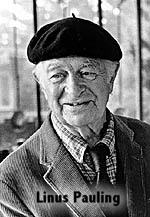
 Two-time Nobel Prize
winner, Pauling
[ bio],
was frequently critical of the role that
money and politics played in misdirecting both fundamental
science and its applications for the betterment of
humanity. Following his foray into the properties and
benefits of ascorbic acid (Vitamin C), the orthodox
medical community attempted to paint Pauling as an
eccentric scientific lunatic who'd been spending too
much time in the laboratory breathing volatile fumes
of unknown origin. Nonetheless, they were unsuccessful
in tarnishing his reputation.
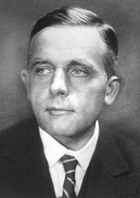
 Warburg
Warburg,
like Pauling, also belonged to the rarified field of 20th century scientists
who had garnered two Nobel Prizes. (Actually,
Warburg earned his first
in 1931; and then a second, which
he was prevented from
collecting in Stockholm, due to German policies at the time.
Warburg's stature in the German scientific community did not
prevent him from paying for his Jewish heritage.) Warburg
was also outspoken concerning the role of money and
politics in "inhibiting" the goal of eradicating
cancer. Warburg's emphasis on prevention was later
studied by James Sheridan, who ended up developing
the Protocel
product. Though Warburg used language that was less
caustic than Pauling -- a feature largely attributable
to their very different personalities -- the point made
by both was unmistakeable. "Prophets of agnosticism"
demonstrates in three simple words Warburg's insight
into the degree to which the mechanistic paradigm
has infected the soul of medicine -- cleaving it
from its humanity. It also shows that although he
may not have articulated the movement along the
"Exosomatic Axis" (covered in a later chapter),
he clearly understood that taking a direction away
from simple, natural, scientifically well-founded
principles of health care, towards more complex,
high profit, high entropy systems was misguided.
By "agnosticism," he also implied that we have
the knowledge to prevent and cure cancer, we simply
don't want to know the truth -- if only because the
truth interferes with certain money-making,
policy-influencing agendas.
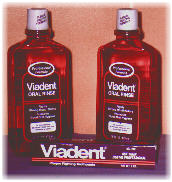
 Dr. Russell Jordan
was instrumental in creating Vipont Pharmaceutical,
as a result of what he learned from Howard McCreary.
(Russell Jordan is the "friend" who is anonymously
disclosed in Clark Bigham's
Contemporary
History of the Escharotic Black Salve).
The initial section on the history of escharotics
demonstrates a lack of knowledge about the
true history and antiquity behind escharotics.
I get to that in Chapter 2.
But the section on Vipont Pharmaceutical is
quite enlightening. Alpha did a similar story
in the first
edition of its Ashwin monthly publication,
and more extensively, in a
December, 2001
piece.
 The suppression of escharotics
for nearly 150 years by the orthodox medical community is, in
the opinion of the author, one of the most scandalous
episodes in the history of medicine. No other event
so glaringly demonstrates the corruption of the
system and the supremacy of money, power, politics,
and market share over science, humanity, or any semblance
of decency, morality or ethics.
 Aside from our own
photographic endeavors, the best pictorial case we ever
received from a customer came from
Dr. Stephen
Weeks in Seattle.
 Since some understanding of
what an escharotic salve does is germane to fully internalizing
the particulars of Chapter 1, I briefly cover the process below.
That Cansema® cured cancer became to us as much a certitude as
the observable, scientifically verifiable fact that hydrogen
peroxide kills microbes topically. As the years passed and
hundreds of testimonials poured in by mail and email (thousands
if you include all the telephonic inputs), we only became
more amazed that something so simple had been so effectively
held back from the public -- for horrific reasons involving politics
and greed. Hence, did the by-line of Alpha Omega Labs came to
be: 'The Triumph of Medical Science Over Politics & Greed.'
And for nine glorious years, a triumph it was (1994-2003)
before the raid.
 Considering that the internal
versions work so well on such a broad range of life-threatening
cancers, that orthodox medicine would, in effect, be willing
to enforce a system of eugenics and see many tens of millions
of people die painful
deaths so that their select few could maximize profit seemed
unthinkable.
 It isn't.
 It is a sad and shameful,
but readily verifiable fact.
 And now the pictures . . .
Stage 1: Eschar Formation
(Melanoma Shown)
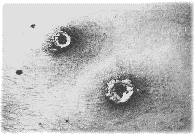
 With escharotics that
attain to the level of performance of
Cansema, the results
are unmistakeable. And initially this means that the product
reacts with cancerous tissue, destroys it, forms an eschar,
while failing to do anything more to healthy tissue than
produce mild irritation.
Even in the one and only "victim" that the FDA used
to incarcerate me, the subject, under oath, stated that her cancer
had been cured (see deposition,
pg. 38-39, or see 48). She said she was
suing because she thought Cansema® also harmed healthy tissue,
though she could not provide any reasonable foundation for
her assertion.
 The variety of escharotic
reactions is staggering. Eschars are usually round, but
pus can be white, green, yellow, greenish yellow, red,
brown, grey, even black. I created a special
instructions
page, and a page devoted to summary of
possible
physiological reactions,
pain management,
vet applications,
suppository applications
(I built our own
suppository manufacturing facility
for this purpose),
a legalities page,
and a set of testimonials
unlike I have even seen on the internet for any conventional
product devoted to removing cancers -- regardless of kind or
location.
 The photo above appears on
the Cansema
introduction page; enlarged still further in
a separate pictorial section.
But it was only one among many such
photos on the site. Early on we posted a photo of an
eschar formation after Cansema®
was applied to
yet another melanoma.
Stage 2: Edema & Isolation
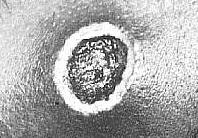
 This is a reduction
of the first melanoma example we provided in
our Cansema® pictorial
section. Edema, the buildup of bodily fluid as an
immunological response to the identification of an
invasive agent to the body, is a given with Cansema,
or any other well-crafted escharotic, when applied
to a cancer. Perhaps I worked that poorly. It might
be better to say that when Cansema® is in proximity
to a cancerous growth, necrosis and edema can be
the anticipated reactions. To not have a death
of the cancer and a edematous response is a strange
and rare anomaly.
Stage 3: Eschar Containment
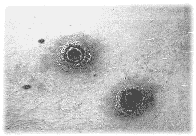
 A fitting
description is found on the
melanoma
pictorial page -- restated here: "The eschar
begins to dry up like any other scab. As healthy dermal
layers are formed beneath the eschar, which nears perfect
and separate formation, it is slowly ejected from the body.
Edema and redness disappear."
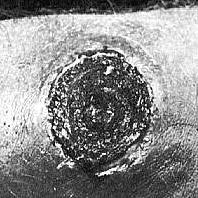
 A recurring problem
with customers who were not working with a health
care professional was a failure to follow
instructions -- at every stage of the process.
In the case of Stage 3, some customers would
pick at the eschar instead of allowing the
process to proceed naturally on its own.
In the case of Sue Gilliatt, the woman who
worked with the FDA to destroy the Alpha Omega
Labs operation, we had one of the more
bizarre examples of this deviation from
simple instructions. Sue actually testified
under oath that she removed her own eschar
with a pair of embroidery scissors -- this,
the best "victim" the FDA could come up
with. (And no, I'm not kidding; see
page 98 of the Gilliatt
deposition). Nonetheless, the
instructions
stand for all to see -- simple and easy for any
normal adult to follow.
Stage 4: Edema Expulsion
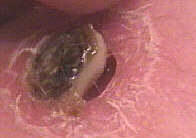
 Again,
from the first
melanoma pictorial page: "The entire eschar,
representing what had been a thriving cancer only days before,
is pushed out of the body when the last connective skin tissue
beneath it is broken or deteriorates. What remains at the site
of expulsion is a decavitation, which we will examine next ... "
 When left to Mother
Nature, the resulting scarring was minimal -- certainly,
from our experience, much less than if the growth had
been removed surgically -- MUCH less. In time, even
the scarring that remained after three months began,
over time, to decrease to the point where many customers
reported that you could not tell that a growth of any
kind had ever existed on the applied area.
Stage 5: Decavitation
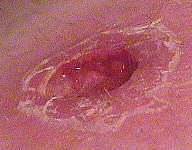
 After the eschar comes
out, a "decavitated area remains." Epidermal layers have
not completely formed, so to the lay person the area can
look extremely raw and unprotected. Nonetheless, in the
thousands of cases we were involved in, never once did
we have a case of secondary infection resulting from
the process. We
stated this clearly on the site, and it is true to
this day.
 For individuals
who were not going through a health care practitioner,
this stage was the scariest for the uninitiated.
In the case of larger growths, the sheer rawness
of what appeared to be unprotected tissue could
be quite unsightly. For the experienced user,
Stage 5 was not a problem.
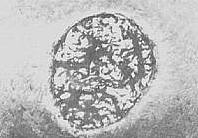
Stage 6: Heal Over
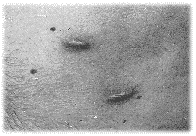
 "The
epidermal layers have come in. There is usually minimal scarring
and discoloration, where
instructions
have been thoroughly followed. In time even the little scarring seen at
right will be marginalized." (See
melanoma pictorial.)
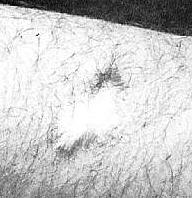
 In time, the success of
Cansema® in terms of performance became so assured that our
focus changed to various methods of minimizing scarring.
Three areas of investigation were represented on
the site: bio-oxidative
therapies (which didn't always represent itself in terms
of a product introduction -- as in our treatment of
hydrogen
peroxide (H2O2)); silicon
sheeting; and, a new area of research,
stabilized hydronium
(H3O), which was so ahead of its time that it became an area not
only of vexatious litigation, but the U.S. federal government's
fabricated basis for raiding (and destroying) Alpha Omega
Laboratories.

 All three approaches
had their advantages, but overall, H3O worked the best.
It worked so well that a variety of medical doctors used
our H3O for post-surgical cleaning to help accelerate
the healing of the wound. One such doctor was Dr. Charles
Smith in Dallas, Texas. In the case of one vexatious
litigation, Sharon Lee, Dr. Smith and Alpha Omega Labs
were both sued -- and the case was settled out of court
after I was imprisoned and the plaintiff lawyer used
a variety of tactics to try and destroy the reputation
(and the medical license) of the good doctor. In the
end Ms. Lee and her attorney walked away with $500,000
total in insurance monies.
 . . . for
a medical injury that could not possible have
happened, just on the basis of what is
even scientifically possible. (Proof that
stabilized H3O, as we sold it, is completely
non-caustic and non-corrosive is provided
on this site).
Suppression
Is Impossible
Without Media
Complicity
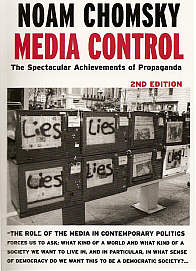
 Noam Chomsky has long been
an outspoken critic of the outrages of U.S. foreign policy.
In Media Control: The Spectacular Achievements of
Propaganda he narrows in on the role of the media in keeping
the implausible integral to the "common narrative." What he
observes is systemic, even if he chooses not to emphasize it:
you'll find it in every facet of modern civilization from
education, energy policy, transportation, communications, agriculture . . . and, as
Meditopia makes clear, medicine. It grows from the same diseased tree
limb as Orwellian Doublespeak.
 This puny
quick-read is not as detailed in historic richness as his
Manufacturing Consent:
The Political Economy of the Mass Media, but it is more
current. Although a good primer would help in reading this
aspect of Chomsky's work (see Edward Bernays'
Propaganda), one
sees the results of its employment everywhere. (See
Into the Buzzsaw:
Leading Journalists Expose the Myth of a Free Press).
 The average citizen,
caught as he is the snare of the "common narrative," doesn't
realize the degree to which propaganda -- and even more
drastic methods of mind-control -- are critical and at
the very foundation of modern governance. And yet I err
in even suggesting that the practice is modern, for such advice
goes back to antiquity in this Age. "It is easy to persuade
the People about some particular matter, but it is hard to
hold them to that persuasion. Hence, it is necessary to
provide that when the People no longer believe, they can be
forced to believe." ( The Prince,
p. 27).
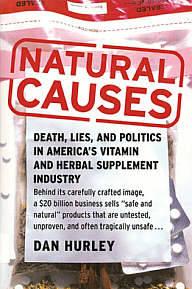
 The concept of
"journalism as propaganda," like most things in life,
is never grasped as vividly as when you are able to
witness it close up. And so it came to pass that while
I was in U.S. federal prison (2005), my wife, Cathryn, received
a phone call from author, Dan Hurley, who indicated that
he was calling to get information about my case. When
the subject of FDA abuses came up from my wife, Dan
Hurley was quick to interject, "Oh no. That's not what
I'm writing about. I'm only out to write the truth . . . "
 Soon enough it became
apparently that Hurley had already established his informational
filters: if what he gathered was largely SUPPORTIVE of orthodox
medicine, it had a place in his forthcoming book; if it
could discredit natural medicine, he was interested --
the more sensational the better. A predetermined thesis
had been created and the author wasn't about to veer from it.
 In the end, my place
in Hurley's book was not minor. It was upfront and center.
In fact, the books begins with a nineteen page Prologue
entitled, "Sue Gilliatt's Nose." The portrayal of this
alleged victim is intimate, detailed, and sympathetic.
He could have placed Sue Gilliatt's position juxtapost
to my own. He didn't. He could have listened to my or
my wife's side of the events. He didn't. He could have
received information showing that Sue Gilliatt and her
attorney committed an enormous fraud upon the courts to
pilfer $800,000 from my insurance company. None of those
details made it into the book because the author made his
goal plain and clear to my wife from their first conversation:
his goal was to present his prepackaged truth -- one
designed to discredit an entire industry that competes with
orthodox medicine.
 Such is the goal,
meaning and purpose of propaganda.
 Associates who heard of the
book told me to pay no mind. After all, the book (on my last
investigation) never managed to ascend above #42,000 on
Amazon.com's book sales list. (As one publisher told me jokingly,
"That means your mother, two uncles, and a cousin bought`
your book. It has no traction with a larger audience.")
In fact, I have no doubt that my
bringing it up on Meditopia will cause more copies to be
sold via those who are merely curious than it has ever
sold to date on its own.
 But that misses the
point entirely.
 Endorsed, as it is
by such orthodox medical figures as Stephen Barrett
with Quackwatch ("a 'must' reading for all Americans ... ")
and Marcia Angell, former editor-in-chief of the New England
Journal of Medicine ("quite simply the best book I've seen
on this important subject . . . authoritative"), I would
have written Meditopia to counter the breathtaking
collage of false and misleading statements if this book
had sold no copies at all.
 I would have written
Meditopia if only because I know that this book reflects
how the established medical community thinks; that it is
contemptuous of empirical reality; that it perversely opposes
the application of a concept so basic and simple that you
hear it at many sporting events: "May the best man win," which applied to medicine means
"May the treatment that permanently cures the patient and is
proven to do so safely, effectively, and inexpensively win"; that I had the power
to expose the irreparable cracks in the foundation that is
their paradigm -- a system so astonishingly corrupt that
it cannot be repaired. It can only be destroyed and rebuilt.
 Suffice it to say that most books
are written in the pursuit of far less noble objectives.
|















